Three notes relating to U.S. Spy Balloons Overflying Soviet and Chinese Territory During the 1970s.
The U.S. also overflew the Soviet Union during the 1950s with both balloons and aircraft. Some of the balloons and aircraft were shot down. The 1950s flights are well known, there may not be as much information in the public domain about the 1970s balloon overflights.
Popular Mechanics just put out an article about U.S. spy balloon development. The US distinguishes between reconnaissance in international waters or international airspace from “spying” that is intruding on national waters or airspace to collect intelligence. China tends to call it all spying. China also has a more expansive definition of where foreign militaries can operate — excluding, like a few other countries it exclusive economic zone (EEZ) as well a its national territorial waters. It also is expanding its national territory and territorial waters in the South China Sea (also called, according to you national preferences, the East Vietnam Sea and the West Philippine Sea) by building islands based on an ancient claim to the area that dates all the way back to 1947.
- Popular Mechanics, February 7, 2023 Why Spy Balloons Are the Pentagon’s New Secret Weapon
Here are three articles from Chinese and Russian sources.
- U.S. Balloons Evade Soviets, Invaded Our Airspace, Zhou Enlai was furious: Destroy It At All Costs (2021 article about 1974 incident)
- Financial Times: Beyond the balloon: the US-China spy game
- Balloons Reveal the Amount of Paper [of the Paper Tiger?] of US Imperialism, Our military repeatedly shot down U.S. military balloons [anonymous February 6, 2023 Chinese language online forum posting]
- High-altitude Soviet fighter aircraft the M-17 “Stratosphere”
Also in this series:
- 2023: PRC Balloon Blacklist; Aerospace Experts, ChatGPT Comment
- 2023 Censored: Chinese Scientists Explain Balloons and Unmanned Airships
- 2023: PRC GTimes — For High-altitude Balloons Studying Atmosphere is their “Main Business”
- 1974:U.S. Balloons Invaded PRC Airspace, Zhou Enlai Furious Orders Destroy It At All Costs
U.S. Balloons Evade Soviets, Invaded Our Airspace, Zhou Enlai was furious: Destroy It At All Costs (2021 article about 1974 incident)
[This article appeared on several Chinese websites, I found it on the Baidu Online Encyclopedia. ]
Published:November 4, 2021
During the Cold War, the U.S. and the Soviet Union fought for global dominance. Both the U.S. and the Soviet Union spent a lot of energy and money on developing new weapons to gain access to top-secret information about each other at any time, so as to come out ahead in the U.S.-Soviet rivalry.
In addition to equipping their respective spy personnel with miniature high-tech spy equipment, the two countries also commissioned the most advanced U-2 reconnaissance aircraft of the time in the 1950s.
Why was the U-2 reconnaissance aircraft the most advanced spy aircraft of its time? Because this aircraft had a maximum cruising altitude of 27,430 meters. The Soviet Union’s best fighter, the MiG-17, could only reach a maximum cruising altitude of 13,000 meters, which means that as long as the U.S. reconnaissance aircraft was high above the MiG-17, the Soviet Union could only stare at the U.S. aircraft rampaging in its airspace.
There is no doubt that the Soviet air defense forces were clearly behind at this time in terms of the maximum cruising altitude of the U-2 reconnaissance aircraft. At first, the U.S. forces did have some arrogance in Soviet airspace with the U-2 reconnaissance aircraft. However, with the Soviets firing 14 rounds of SAM2 missiles, a U-2 reconnaissance aircraft was shot down at an altitude of 10,000 meters.
After the most advanced U.S. reconnaissance aircraft was shot down, the Soviet Union took advantage of the situation to condemn the U.S. military in international fora for violating its airspace. It put the downed U-2 reconnaissance aircraft on display as physical evidence. This Soviet move made U.S. President Dwight D. Eisenhower pull back. From then on, the U.S. military never dared to engage in high-altitude espionage in the Soviet Union and elsewhere in plain sight.
But the United States has always been an extremely arrogant and conceited country. Now that the U-2 reconnaissance aircraft can no longer fly over the Soviet Union to spy at high altitudes, could it be replaced by higher-flying unmanned balloon to conduct reconnaissance?

So the Americans created a balloon with a diameter of 15 meters that could lift a high-definition camera and all the equipment needed to fly the unmanned spy balloon to a maximum altitude of of 40,000 meters.
The SAM2 anti-aircraft missile maximum has a maxium operational altitude of 34,000 meters. In other words, the American spy balloon fly a full 6000 meters higher than the maximum altitude of the SAM2 anti-aircraft missile putting the spy balloon well out of reach.
When the U.S. spy balloons crossed five continents and four oceans to invade the Soviet Union’s Siberian skies in May 1974, the Soviet Union deployed MiG-19 and MiG-21 warplanes to intercept the U.S. balloons were unable to do anything. They finally had to just watch as the American balloons waltzed out of Soviet territory into our airspace.
U.S. balloons evaded Soviet interception, which made the Soviets feel disgraced. That was why the Soviets set their minds to developing a high altitude balloon interceptor called M-17 “Stratosphere” to try to intercept U.S. balloons in the future. This M-17 was not ready however until after 1982.
Of course, this is all an afterthought.
At this time, the U.S. balloon had eluded Soviet interception to invade our airspace. The best efforts of the Soviet military had been unable to intercept the U.S. spy balloon. Would New China’s Air Force has be able to intercept it?
In fact, not only many people at the time thought so. The Americans didn’t think so either. The Americans thought that the Soviets had so many advanced weapons but were still not able to intercept it. So how could the Chinese with their shoddy, broken down weapons be able to intercept the advancd U.S. weapons?
Due to their extreme American arrogance, the U.S. military set what would prove to be a fatal routine for themselves. They lowered the operating altitude for the balloon flight altitude from the original 40,000 meters to 10-20,000 meters. This was because, in the American view, this lower height was already insurmountable for impoverished New China. Even if New China’s Air Force has the ability to fly to such an altitude, for it to shoot down the U.S. balloon would be much too difficult.

In fact, the Americans would soon taste the bitter fruit of paying the price for their arrogance.
In May 1974, a U.S. balloon entered New China’s Xinjiang and made its way east across the entire country, until it had made its leisurely way to Yi County in Hebei Province. Along the way it also did not forget to recklessly from high altitude get good access to China’s ground information.
This barbaric and brutal act of the U.S. military trampling on China’s sovereignty aroused the strong indignation of New China’s aviators. When the news of the U.S. balloon intrusion into our airspace was reported to Premier Zhou Enlai, Premier Zhou was furious when he learned: “It must be taken out at all costs!”
Instructions are orders, and soldiers obey orders as their natural duty!
Under orders from Premier Zhou, the Air Force immediately set up a temporary command group. After intense discussions, it finally finalized the battle plan of selecting four outstanding pilots to fly four J-6 fighters, putting one in the air every ten minutes, and firing at the balloon with one gun at a distance of 1~2 km from.
But even so, it is not an easy task to shoot down this behemoth. The U.S. balloon was 15 meters in diameter and the J-6 fighter has a wingspan of only 9 meters. Compared with the U.S. balloon, the J-6 looked like a toy.
The maximum flight speed of the J-6 fighter is 1490 km/h. At an altitude of 10,000 meters, it had to fire with one gun at a distance of 1~2 km, that is to say, the pilot had to shoot while flying the J-6, very fast, too late to react quickly so there was grave danger of an accident from the plane colliding with the balloon.
In order to accomplish this seemingly impossible task, the Air Force headquarters carefully selected four top pilots from the flight school, including an outstanding pilot named Dong Pei.
Dong Pei’s teacher was Zhao Baotong, a first-class combat hero. Anyone familiar with the history of New China’s Air Force knows that Zhao Baotong had a terrific record, He shot down seven U.S. planes by himself in the Korean battlefield, making U.S. pilots afraid to fight him.
For Dong Pei, Zhao Baotong once commented, “Dong Pei is the best pilot I have ever seen since the founding of the flight school!” Even the legendary old flight hero Zhao Baotong praised him, which shows how outstanding Dong Pei was.

Dong Pei’s excellence was indeed as Zhao Baotong had said. 9:00 a.m. on May 15, 1974, four fighter planes of our Air Force were ready to take off. As a flare pierced the sky, two J-6 fighters took off one after another to rush into the clouds to an altitude of 10,000-meter to confront the U.S. balloon.
Only unfortunately, the U.S. spy balloon in 10,000 meters high was weaving back and forth because of irregular air current. This, coupled with the distance, limited firepower and other factors, the two warplanes were unable to hit the balloon.
At this point it was the turn of Dong Pei in the third fighter. He took a deep breath and then flew the fighter plane straight up into the blue sky. Following the previously developed plan of attack, but still failed to shoot down the American balloon, just as the first two fighters did.
After seeing that the original battle plan did not achieve actual results, Dong Pei flew his plane around the balloon in a circle and considered changing the battle plan in his mind: if the attack distance was shortened to 400 meters, and of he then used three guns to firing in unison, would this be more effective?
He knew that at 10,000 meters high altitude firing all three guns would make it vey likely that his engine would flame out because of lack of oxygen. By now, however, Dong Pei already wasn’t worrying about that too much. He flew 400 meters from the U.S. balloon, firing all three guns. With a loud “boom” the U.S. balloon at 10,000 meters altitude dissolved into nothing. The balloon that the advanced weapons of the Soviet Union had not been able to shoot down was finally shot down by the Chinese! What a miracle!

After the U.S. spy balloon was destroyed, the remaining remnants of the balloon and photographic equipment were found in Hebei Province. New China put them on display in the Chinese History Museum in mockery, Dong Pei was recognized by Premier Zhou Enlai for his outstanding performance.
When Premier Zhou learned that Dong Pei had actually risked his life to destroy the American balloon, Premier Zhou happily approved his reward. Dong Pei to attend the 25th National Day reception as a heroic model worker and peasant soldier!
Shortly thereafter, Dong Pei was promoted from squadron leader to senior captain, and the Chinese Air Force once again renewed the glorious fighting spirit it had had in the War to Oppose America and Assist Korea.
[This comment anonymous comment appeared below on the Chinese language online forum 綜合避難所[Comprehensive Refuge] on February 6, 2023. The website is apparently located outside of China since there is no PRC Provincial Public Security office registration at the bottom of the page.]
Balloons Reveal the Amount of Paper [of the Paper Tiger?] of US Imperialism, Our Military Repeatedly Shot Down U.S. Military Balloons
U.S. hypes “spy balloon”! Our military has shot down U.S. balloons many times, the J6 and J10 fighter jets shot them down.
The United States in the 1960s and 1970s used a large number of high-altitude balloons to reconnoiter our military intelligence.
In May 1974, a high-altitude reconnaissance balloon into our country to the direction of Bohai Bay floating. May 14, a division of the Beijing Air Force received orders to be sure to shoot down the next day through a U.S. spy balloon over Yi County in Hebei Province.
On May 15th, the spy balloon appeared on radar and 2 J-6 fighters took off. The second J-6 fighter was piloted by Dong Pei, who took the J-6 flight to its maximum altitude, got to within 400 meters to the balloon and shot it with aerial gun fire. The spy balloon burst. As this had reached the ceiling of the J-6, the jet engine almost flamed out due to lack of oxygen. However, Dong Pei also became the first Chinese pilot to shoot down an American spy balloon. The remains of this downed balloon were later found locally in Hebei and soon sent to the Chinese Military Museum for exhibition.
In September 2019, an ultra-high altitude powered reconnaissance balloon appeared over China’s Yunnan Province. Air Force fighter pilot Wu Hui led the order and flew J-10C fighter jets to intercept it in an emergency.
At this time, our military equipment has long “substituted canons for guns”, Wu Hui selecte the most advanced infrared imaging-guided PL-10 close-range combat air-to-air missile to immediately blow the “trespasser” to smithereens.
High-altitude Soviet fighter M-17 “Stratosphere”
November 29, 2012
23
M-17 “Stratosphere” (according to NATO classification: Mystic-A) is a Soviet high-altitude aircraft designed to combat drifting balloons. The plane was subsonic. For the first time, a supercritical high-carrying wing profile was created for this aircraft, which was designated as П-173-9. The development of the M-17 aircraft began in the 1970 year. By 1978, the first flight model of the new machine was created at the helicopter plant in the city of Kumertau, which, unfortunately, crashed while running. The second flight model was created only in 1982 year, this time the aircraft was assembled at the Smolensk aircraft factory. 26 May 1982, test pilot E. V. Cheltsov first raised the high-altitude subsonic plane into the air, the flight was carried out from the airfield in Zhukovsky. In the spring of 1990, this machine immediately set the 25 world records for speed, altitude, and rate of climb for airplanes with a mass of 16-20 tons, equipped with a single turbojet engine. At the same time, the last sample of the M-1990 aircraft was assembled by 17.
After the U-1960 high-altitude American reconnaissance U-2 under Powers was shot down in May 0 near Sverdlovsk, the United States decided to revise the aerial reconnaissance strategy over the territory of the USSR. By the time the CIA armed itself, a new means of delivering reconnaissance equipment to the airspace of the Soviet Union appeared – automatic drifting balloons that were launched from the territory of some NATO countries. These balloons used the winds that dominate at high altitudes over the territory of our country and could cross the USSR from west to east. Such balloons were controlled by radio and could, on command from the ground, change the altitude almost from 45 to 50-XNUMX km. At the same time, the balloons could carry not only “innocuous” reconnaissance equipment, but also a fairly wide range of explosives that could have been dropped from the ground by a team.
The air defense of the USSR was forced to use earth-air or air-to-air missiles to destroy these uninvited guests. At the same time, the cost of destroying an aerostat made of cheap dacron or maylar film was tens of times greater than the cost of this drifting balloon. Moreover, the preparation of balloons for flight and the deployment of technical means did not require much time from NATO, so their mass launch put the defense of the USSR at risk.
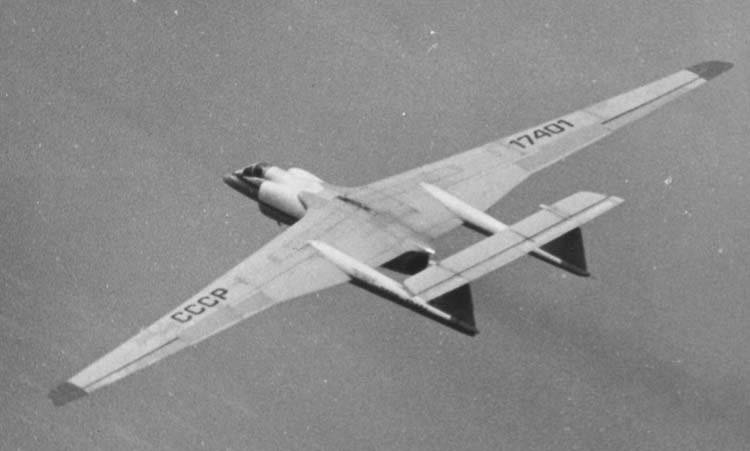
Taking this into account, in 1967 a decree of the Council of Ministers of the USSR and the Central Committee of the CPSU was issued, according to which the Experimental Engineering Plant (EMZ), located in Zhukovsky near Moscow and headed by V.M. Myasishchev, was ordered to carry out a set of scientific research works (R&D) “The choice of technical directions for creating an aviation complex for intercepting and hitting automatic drifting balloons”. The deputy chief designer G. I. Arkhangelsky was assigned to lead this topic at the EMZ. Within the framework of this project, a very large amount of work was carried out; head institutes were connected to the solution of the problem aviation industries, concerned departments and ministries. As a result of a comprehensive technical and economic analysis, the creation of a subsonic high-altitude fighter aircraft equipped with small-arms weapons was recognized as the best solution.
In 1970, work on the USSR Air Defense System began work on the subject No. 17, which assumed the creation of a high-altitude fighter aircraft. VM Morkovkin became the lead designer of the project. By that time, the OKB had already studied in detail the wreckage of the U-2 high-altitude reconnaissance downed near Sverdlovsk, and quite plump volumes of the comparative characteristics of the units and systems of this aircraft with Soviet counterparts were compiled. At the same time, Soviet engineers won over the simplicity and simplicity of the design of the American aircraft and its systems. The results obtained during the study of the wreckage of U-2 showed that the creation of a domestic high-altitude interceptor based on Soviet science and technology is a rather painstaking and lengthy work that will require the search for new solutions.
A decisive influence on the future appearance of the car then had a choice of power plant. Out of all the diversity of the schemes under consideration, only 2-e were ultimately left: with two D-30 two-circuit engines P.O. Solovyov’s 6,6 tons, which were suspended in nacelles on the lower wing surface and with a single RD-36-51A engine of design P A. Kolesova, with take-off in 18 tons, which was located in the fuselage of the machine. In the course of the tests, it was found that at altitudes above 11 kilometers the drop in thrust turned out to be large for the dual-circuit D-30. In addition, the desire to have an aerodynamically clean wing and the need to accommodate a large amount of fuel also tipped the scales to a single engine located in the fuselage.
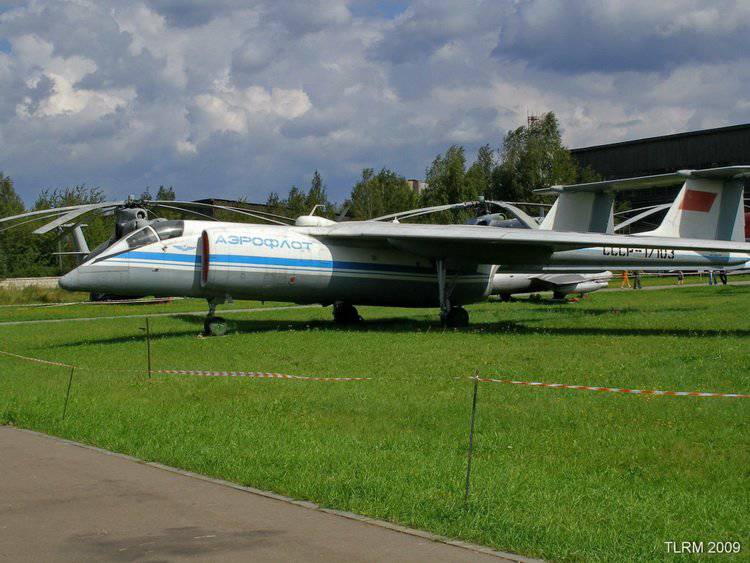
In addition, the RD-144-36А engine, developed for a supersonic Tu-51, had a separate gear box for aircraft units, which greatly facilitated the layout of the entire power plant, and also made it possible to reduce the midsection of the fuselage. All this ultimately led to the final choice of a single-engine option. At the same time, the look of the American U-2, which was an airplane of a traditional scheme with an engine equipped with a large extension pipe, did not become due to inexpediency. It was decided to stay on the two-beam scheme.
In 1971, the aircraft under development received the official designation M-17 “Stratosphere”. In the technical project for this project, a condition was set for achieving a height of locking in 23-25 km., As well as ensuring its piloting by ordinary combatant pilots. To achieve the required aerodynamic characteristics for the new aircraft, first of all it was necessary to develop a wing with unique bearing properties. The result of these works was the wing of the original dual-mode design, which in flight could change its area and shape (due to the extension in flight of the tail section of the profile). A copyright patent was obtained for this wing.
In parallel with the solution of aviation problems, a simple enumeration of which would take several pages of text (design, cockpit ergonomics, configuration and area of the HE, location of the main landing gear, etc.), work was carried out to create a search and aiming station to detect balloons and targeting weapons system. Due to the very low radar visibility of reconnaissance balloons, it was decided to use an active optical search and target tracking system. The system included a survey direction finder, which was to find a target, a tracking direction finder and a laser range finder, which was then called a quantum finder. This system was supposed to accompany the target in flight and control the fire of a rapid-fire gun in automatic mode with the possibility of making adjustments.
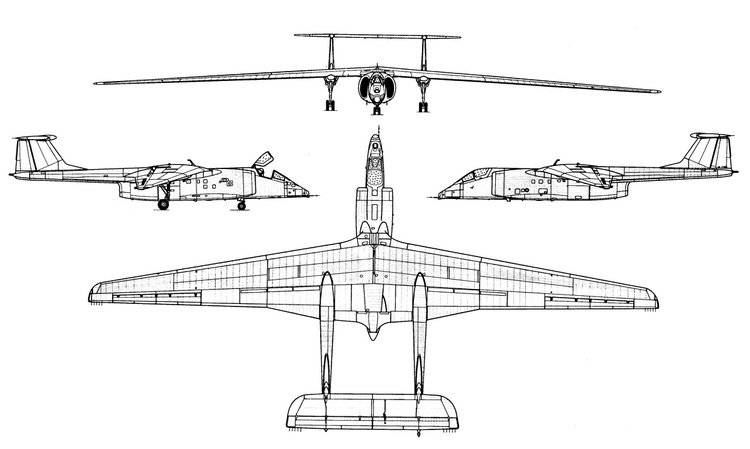
This system was successfully created in the Geophysics Central Design Bureau, the designer D. M. Khorol supervised the work. The system developed by him in the future proved to be from the best side, since the indicators given by the terms of reference were significantly exceeded. The requirements for the optical characteristics of the system being created were so high and serious that, for example, the windshield of the range finder had to be made from Brazilian mountain crystal. In the USSR, they simply could not find a mineral with such a small number of impurities and impurities.
For the destruction of reconnaissance balloons, the PUF was chosen – a mobile cannon set up created by the Dzerzhinets station on the basis of the well-proven 23-mm rapid-fire gun GSH-23L, which had a rate of 3400 shots per minute. At the same time she weighed only 47 kg. In addition, the designers had to develop a highly sensitive fuse that would have been triggered by hitting a very thin aerostat shell, which was another important step towards the destruction of aerostats with 23-mm projectiles.
The accompanying physical effect unexpectedly helped the Soviet designers in this. During damage to the shell of the balloon fragments of the projectile formed only small holes, the gas flow through which was not sufficient to reduce the balloon. However, to the delight of the Soviet designers, a reactive moment appeared, twisting the envelope of the balloon relative to its more inertial suspension. The feet holding this suspension squeezed the envelope, and the gas from the balloon was squeezed out with increasing intensity. In addition to this, special explosive shells were created, which at the moment of operation scattered wire flagella, which significantly increased the area and size of the holes.
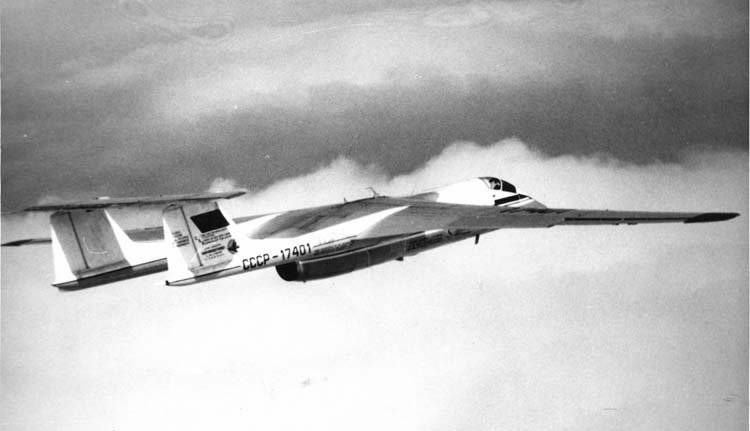
In terms of its layout, the Stratosphere M-17 was a double-beam apparatus, having a short fuselage and a “clean” wing of a sufficiently large span – 40 meters. It is worth noting that the M-17 re-opened the scheme for modern jet aircraft. At the same time, it is worth noting the fact that at all times the myaschevites favorably differed from the designers of most other design bureaus by their special attitude to the decisions of rivals and colleagues. That is what allowed, ultimately, to develop an aircraft with very good flight characteristics.
Specialists noted a unique profile, as well as wing mechanization of the Stratosphere. Here a completely new supercritical wing profile was applied, which allowed the aircraft to have an increased aerodynamic quality in almost the entire range of altitudes and speeds of flight. The wing of the M-17 was later even called adaptive, which was the result of its variable profile geometry (not to be confused with the variable sweep of the wing). In addition, to improve the aerodynamic characteristics of the machine was due to the original wing tip. The fact that M-17 could plan from a height of 1 km indicates the high flight capabilities of the car. at a distance of 30 km.
Unfortunately, the unique aircraft became hostage to the changed situation. Work on its creation was delayed, while the Americans launched their last balloon in November 1983, from the territory of Norway. In the future, the United States simply stopped using these intelligence assets against the USSR. However, the developments on M-17 were not in vain and became the basis for creating a civilian version of the M-55 “Geophysics” aircraft.
Tactical and technical characteristics of the M-17:
Dimensions: wingspan – 40,32 m., Length – 22,27 m., Height – 4,87 m.
Wing area – 137,7 square. m
Aircraft normal take-off weight – 19 950 kg.
Engine type – 1TRD WCRMB (Novikov) RD-36-51В, 6 000 kgf.
The maximum speed is 743 km / h.
Practical range – 1 325 km.
Flight duration – 2 hours 14 minutes.
Practical ceiling – 21 550 m.
Armament – mobile gun mount based on GSH-23L
Crew – 1 man.
Information sources:
-http: //www.airwar.ru/enc/spy/m17.html
-http: //www.dogswar.ru/oryjeinaia-ekzotika/aviaciia/4570-vysotnyi-istrebitel-.html
-http: //www.airbase.ru/hangar/planes/russia/m/m-17
– http://ru.wikipedia.org
美国气球躲过苏军侵入我领空,周恩来大怒:不惜一切代价干掉它
原创|发布:2021-11-04 23:02:01 更新:2021-11-04 23:02:01
阅读 4559赞 18
冷战期间,美苏争霸,美国与苏联为取得全球支配权,不惜动用大手笔耗费大量精力和财力研制新式武器,以随时打入对方内部获取对手绝密情报,从而在美苏争霸中占得一席之地。
在这当中两国除了给各自间谍人员配备微型高科技间谍设备,美国还在上个世纪50年代启用了当时最为先进的U-2侦察机。
为什么说U-2侦察机是当时最先进的间谍飞机呢?因为这款飞机最大巡航高度可达27430米。而同时期苏联最好的歼击机米格-17最大巡航高度只能达到13000米,也就是说,只要美国的侦察机高度在米格-17之上,苏联只能眼巴巴瞪着美国飞机在其领空上肆意妄为。
毫无疑问,就U-2侦察机的最大巡航高度来讲,此时的苏联防空力量显然是落伍了。起初,美军凭借着U-2侦察机确确实实在苏联领空嚣张了一阵子。不过,伴随着苏军一轮齐射14发萨姆2导弹,美国的U-2侦察机当即在万米高空被打了下来。
美国最先进的侦察机被打下来后,苏联趁势在国际上谴责美军侵犯其领空,并把击落的U-2侦察机陈列出来作为物证。苏联的举动搞得美国总统艾森豪威尔非常被动,从此,美军再也不敢明目张胆在苏联等地从事高空间谍活动。
但美国素来是个极度傲慢且自负的国家,既然U-2侦察机再也不能去苏联高空搞间谍活动了,那换个飞得更高的无人气球去搞侦察不就成了?

于是美国人又开始捣鼓出了一个直径15米,可携带高清摄像机及全套发射装置,且最高升限达4万米的无人间谍气球。
要知道,萨姆2防空导弹最高作战高度为34000米,换句话说,美国人的间谍气球比萨姆2 防空导弹搞出了足足6000米。也就是这6000米的高度却令苏联人望尘莫及。
当1974年5月,美国的间谍气球穿越五大洲四大洋侵入苏联的西伯利亚上空时,苏联出动了米格-19、米格-21等战机去拦截都拿美军的气球毫无办法,最后只能眼睁睁任由美国人的气球大摇大摆飞出苏联境内进入我国领空。
美国气球躲过苏军的拦截,这让苏联人感到颜面无光,为此,苏军横下心研发出了一款名为M-17“平流层”高空气球截击机试图日后拦截美国气球,只不过,这块拦截机要到1982年以后才算研制成功。
当然,这都是后话了。
此时,美国气球躲过苏军拦截侵入我国领空,实力雄厚的苏军都无法拦截下来的美国气球,新中国空军有能力拦截下来吗?
其实,不光当时很多人都这样想,就连美国人也是这样想的。美国人认为苏军有那么多先进武器都没能拦截下来,凭中国那几样破铜烂铁,怎么可能拦截得下他们的先进武器嘛!
在美国人这种极度目中无人的狂妄之下,美军开启了一个作死的节奏,即将气球飞行高度从原来的4万米调整到了1~2万米。因为在美国人看来,这个高度对于一穷二白的新中国来说已经是难以逾越的高度了,纵使新中国的空军有能力飞抵这样的高度,想要击落美国的气球简直比登天还难。

事实上,美国人很快就要尝到为自己的傲慢付出代价的苦果了。
1974年5月,美国气球进入新中国新疆后,一路向东慢慢悠悠票到了河北易县,沿途还不忘肆无忌惮从高空疯狂获取我国地面信息。
美军这种野蛮且粗暴践踏一国之主权的行径引起了新中国空军人的强烈愤慨。当美国气球侵入我领空的消息上报到周恩来总理面前时,周总理得知后大怒:“要不惜一切代价把它干掉!”
指示就是命令,军人以服从命令为天职!
在周总理的指示下,空军火速成立临时指挥小组,经过激烈的研讨后,最终敲定选4名优秀飞行员分别驾驶4架歼-6战斗机,每隔十分钟升空一架,在距离气球1~2公里的距离以一炮齐发的方式开火的作战计划。
但即便如此,要打下这个庞然大物并非是一件容易的事情。美国气球直径足足15米,歼-6翼展才9米。在美国气球面前,歼-6看上去就像个玩具一样。
歼-6的最大飞行速度1490千米/小时,在万米高空,要隔着1~2公里的距离用一炮齐发的方式开火,也就是说,当驾驶歼-6的飞行员如果来不及快速做出反应,极有可能造成飞机撞上气球的安全事故。
而为了完成这个看似简直根本不可能完成的任务,空军总部从航校精挑细选4名尖子飞行员,其中就有一名叫董培的优秀飞行员。
董培的老师是一级战斗英雄赵宝桐,赵宝桐此人很是不简单。熟悉新中国空军史的人都知道,赵宝桐曾在朝鲜战场上创下一人击落7架美国飞机的骇人战绩,吓得美军飞行员都不敢跟他交手。
对于董培此人赵宝桐曾评价:“董培是我见过航校建校以来最优秀的飞行员!”就连一代传奇老飞行英雄赵宝桐都对他赞赏有嘉,由此可见董培何等优秀。

董培的优秀确实如赵宝桐所评价的那样。1974年5月15日上午9时,我空军4架战机蓄势待发,伴随着一颗信号弹刺破苍穹,两家歼-6先后轮番冲入云霄在万米高空与美军气球博弈。
只可惜,由于美军的间谍气球在万米高空中随着气流来回做无规则波动,再加上距离、火力等因素,两架战机腾空后都无法命中。
此时轮到第三架战机上的董培出场了,只见他深吸一口气,然后驾机直奔蓝天,遵循了此前制定的攻击计划,但依然如前两架战机那样,未能击落美军气球。
见原定作战方案没取得实际战果后,董培驾机绕着气球飞行一圈时便在心里考虑改变作战计划:倘若把攻击距离缩短至400米,再改用3炮齐射,这样效果会不会更好些呢?
要知道,在万米高空采用3炮齐射,极有可能造成发动机缺氧而随时空中停车,但此时的董培已经顾不得这么多了,只见他驾机飞抵距离美国气球400米时,猛然连射3炮,“轰”的一声巨响,顿时美军气球在万米高空化为乌有,手握先进武器的苏联都没能打下来的美国气球最后竟然被中国人给打了下来,奇迹!真是奇迹!

美国的间谍气球被击毁后,气球剩余的残害和摄影器材在河北境内被找到,新中国将其纳入中国历史博物馆展出以示嘲辱,而董培也因出色的表现得到了周恩来总理的肯定。
当周总理得知董培竟冒着生命危险击毁美国气球时,周总理高兴批示:董培以工农兵英雄模范的身份参加国庆25周年招待会!
此后不久,董培也因此从中队长升迁为大队长,中国空军再次以强悍的实力续写了抗美援朝的辉煌战绩
Chinese text of online comment
無題無名2023/02/06(一)11:25:15.638ID:f.86nyn6(1/4)No.17912267del
气球测出美帝含纸量,我军多次击落美军气球
美国炒作“间谍气球”!我军多次击落美军气球,歼6歼10都打过
美国在上世纪60、70年代大量使用高空气球侦察我国的军情。
1974年5月,一具高空侦察气球进入我国向渤海湾方向飘去。5月14日,北京空军某师接到命令,务必击落第二天途经河北易县的这具美国间谍气球。
15日,间谍气球出现在雷达上,2架歼-6战斗机起飞。第二架歼-6战斗机由飞行员董培驾驶,他操控歼-6飞行到了极限高度,接近气球400米的距离上航炮齐射,将间谍气球打爆。由于此时已经到了歼-6的爬升极限,因此导致发动机缺氧差点停转。不过董培也成为了中国第一个击落美军间谍气球的飞行员。后来这个被击落的气球残骸在河北当地被发现,不久送到了中国军事博物馆展览。
2019年9月,一具超高空动力侦察气球现身我国云南上空。空军战机飞行员武辉领命,驾驶歼-10C战斗机紧急升空拦截。
此时我军装备早已“鸟枪换炮”,武辉选择了目前最先进的红外成像制导的PL-10近距格斗空空导弹,直接将这个“擅闯者”炸得粉碎。

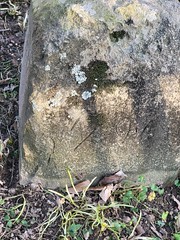


Pingback: 2023: PRC GTimes — For High-altitude Balloons Studying Atmosphere is their “Main Business” | 高大伟 David Cowhig's Translation Blog
Pingback: 彷徨的气球:“间谍气球”事件与其背后的美中关系 - 美中故事汇
Pingback: 2023: PRC Balloon Blacklist; Aerospace Experts, ChatGPT Comment | 高大伟 David Cowhig's Translation Blog
Pingback: 2023 Censored: Chinese Scientists Explain Balloons and Unmanned Airships | 高大伟 David Cowhig's Translation Blog
Great stuff, David.
Two minor points from the Chinese article. That photo is of a tethered aerostat, not a free-floating balloon. And the U-2 photo is the later version, bigger than the ones that flew over the USSR and the PRC.
Chris Pocock, author, 50 YEARS OF THE U-2
http://www.dragonladytoday.com
http://www.dragonladyhistory.com
LikeLike
Chris,
Thank you for your help. I made the corrections. David
LikeLike